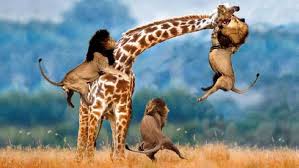Giraffes, the tallest creatures on Earth and a symbol of Africa are at risk of disappearing forever. Over the last 30 years, their numbers have dropped by 40%, and there are now fewer than 70,000 mature giraffes left in the wild. Let's explore the five biggest threats these gentle giants face and what's being done to protect them.
- Habitat Loss: Giraffes need vast areas of savanna with lots of native bushes and trees to find food. The biggest danger they face is losing their homes due to human activities like farming and expanding towns. This habitat loss is a significant reason for the decline in giraffe numbers. Conservationists are working to protect the remaining habitat, especially outside of protected areas.
- Insufficient Law Enforcement: Illegal hunting or poaching for the bushmeat trade is another serious threat to giraffes. Strong enforcement of wildlife protection laws is crucial to tackle this problem. Conservationists are working to strengthen these laws and reduce the demand for giraffe products. They're also supporting anti-poaching efforts and providing communities with alternative ways to make a living.
- Ecological Changes: Human actions like deforestation, mining, road construction, and water diversion can harm the environment where giraffes live. These changes can disrupt their food sources and movement patterns. Conservationists are promoting sustainable forestry, eco-friendly cooking methods, and planning for water resources. They're also including wildlife crossings in road and pipeline projects to help giraffes move safely.
- Climate Change: Giraffes might not be directly affected by higher temperatures, but changes in rainfall patterns due to climate change can harm them. More rainfall can lead to disease and lower food quality. However, preserving natural savanna from human exploitation can help giraffes adapt to these changes.
- Lack of Knowledge and Awareness: Many people are not aware that giraffes are endangered and face multiple threats. Giraffes are often overlooked in research, funding, and policy. Conservationists are working to increase awareness about giraffes and conducting research to better understand their needs.
In a recent study, researchers ranked these threats and assessed possible solutions. They found that strengthening wildlife law enforcement is the most effective tool in preventing giraffe extinction. With their vast territories, giraffes can't survive solely within small, fragmented protected areas. To secure a future for these majestic creatures, experts recommend permanently protecting the routes giraffes use to move between areas and expanding wildlife law enforcement beyond formally protected zones.
By addressing these challenges, we can work towards ensuring a safe and thriving future for giraffes in Africa.
Please send us an email at info@africantravellerltd.com for inquiries or to arrange your visit to Rwanda.
